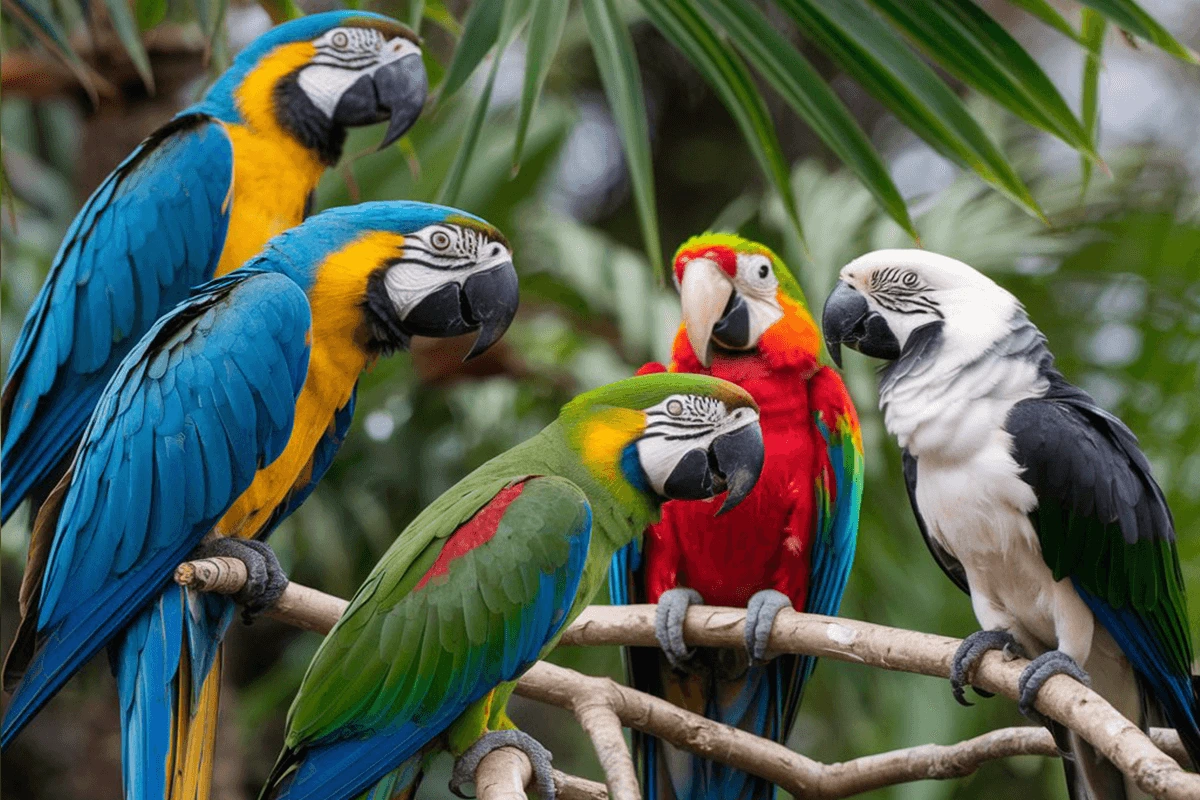Parrots are not just pets—they are intelligent, social, and vibrant companions that can bring immense joy to your life. As a parrot owner, you take on the responsibility of understanding their unique needs, including Parrot Lifespan and how long they are likely to live. Some parrot species can live for decades, even outliving their owners, while others have shorter lifespans that still require thoughtful care to maximize their potential.
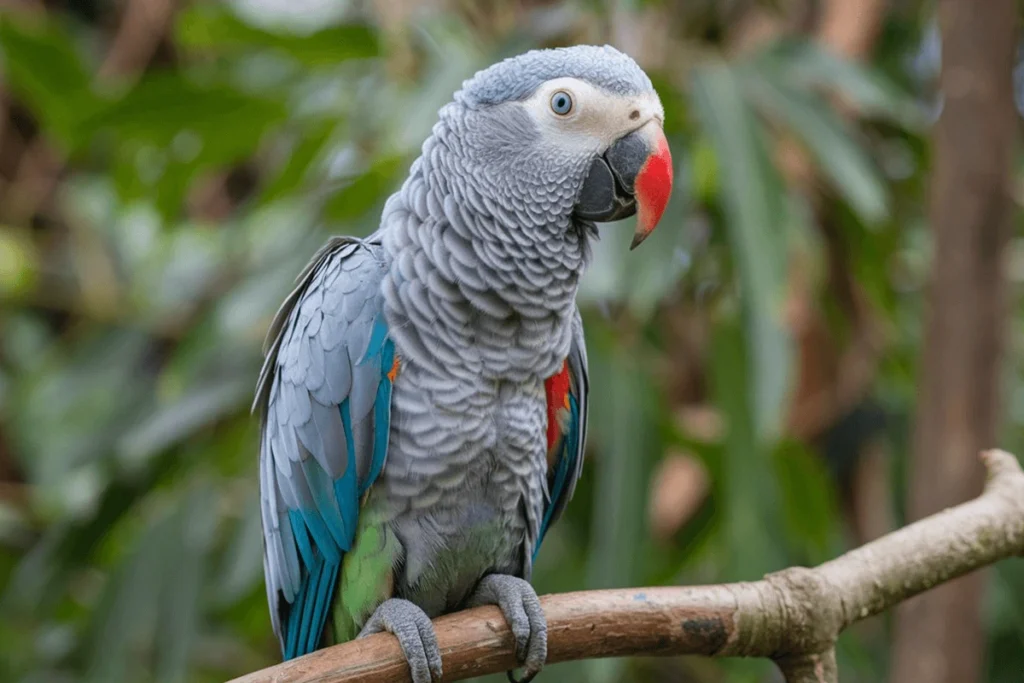
Knowing the average lifespan of your parrot helps you plan for their long-term well-being and establish a deeper connection. A parrot’s life expectancy depends on several factors, such as diet, environment, and the level of care you provide. By learning about these factors, you can create a nurturing environment that supports their health and happiness.
In this comprehensive guide, we’ll explore the lifespans of different parrot species, highlight the key factors that influence longevity, and share practical tips to help your feathered friend thrive. Whether you own a chatty African Grey, a playful Budgerigar, or a majestic Macaw, you’ll find valuable insights to ensure your parrot enjoys a fulfilling, healthy, and long life by your side.
Understanding Parrot Lifespan
What is the Average Parrot Lifespan?
Parrots are among the longest-living birds, but their lifespans vary widely depending on the species. Small parrots like Budgerigars often live between 5 to 10 years, while medium-sized species such as Cockatiels and Conures can live 15 to 25 years. Large parrots, including Macaws, Cockatoos, and African Greys, often boast impressive lifespans of 40 to 70 years or more when given proper care.
It’s important to note that these numbers are averages and not guarantees. Factors like diet, exercise, stress, and genetics can significantly influence a parrot’s life expectancy. Owners need to understand their specific parrot’s needs to help them reach the higher end of these averages.
Additionally, many parrots develop deep emotional bonds with their owners over time, making their longevity a crucial factor to consider when deciding to bring one into your life. Understanding their potential lifespan is the first step in providing them with the care they deserve.
Factors Affecting Parrot Lifespan
A parrot’s lifespan depends on a combination of internal and external factors, including:
- Diet and Nutrition
A balanced diet is the cornerstone of a healthy parrot life. Parrots thrive on a mix of seeds, pellets, fresh fruits, and vegetables. Poor nutrition, such as a diet too high in seeds, can lead to obesity, vitamin deficiencies, and shortened lifespans. - Environment and Living Conditions
Parrots need a clean, spacious, and safe environment to thrive. Stress from overcrowding, noisy environments, or inadequate space can negatively affect their health. Ensuring your parrot has room to stretch its wings, climb, and explore reduces boredom and promotes longevity. - Exercise and Mental Stimulation
Parrots are highly intelligent and active birds that require both physical and mental stimulation. Providing toys, puzzles, and opportunities to fly or climb keeps them engaged and reduces the risk of behavioral and health issues. - Regular Veterinary Care
Routine health check-ups are essential for early detection and prevention of illnesses. Parasites, infections, and chronic conditions can drastically shorten a parrot’s lifespan if left untreated. - Genetics and Species-Specific Traits
Some species are naturally predisposed to longer lives due to their genetic makeup. Understanding the specific traits and vulnerabilities of your parrot’s species can help you anticipate and address potential health concerns.
Wild vs. Captive Parrots: Lifespan Differences
Parrots in the wild and those in captivity face vastly different challenges that affect their longevity.
- Wild Parrot Lifespan
Wild parrots live in their natural habitat, where they must navigate predators, food scarcity, and environmental changes. These challenges often limit their lifespans, with many wild parrots not reaching the upper end of their species’ potential age. However, their diet of varied fresh foods and constant activity helps them maintain natural health.
- Advantages of Captive Life
In captivity, parrots benefit from consistent access to food, protection from predators, and regular health care. With proper care, many captive parrots live significantly longer than their wild counterparts. For example, a Cockatiel might only live 10 years in the wild but can thrive for over 20 years in a well-maintained home. - Challenges for Captive Parrots
Despite the advantages, captive parrots face unique challenges. Stress, lack of stimulation, poor diet, and inadequate exercise can lead to health problems that shorten their lives. Ensuring they receive proper care, enrichment, and social interaction is critical for helping them live to their full potential.
By understanding these differences, you can appreciate the importance of providing a safe, stimulating, and healthy environment for your parrot, ensuring they enjoy a long and fulfilling life in your care.
Lifespan of Parrots by Species
Popular Long-Living Parrot Breeds
Some parrot species are renowned for their exceptional longevity, often living for decades when provided with proper care. These long-living breeds not only become lifelong companions but can even span multiple generations within a family.
- African Grey Parrots (50–60 years)
Known for their extraordinary intelligence and ability to mimic human speech, African Grey Parrots are among the longest-living parrot species. With a proper diet, regular mental stimulation, and a stress-free environment, they can live up to 60 years or more. Their emotional sensitivity makes them bond deeply with their owners, emphasizing the importance of consistent care.
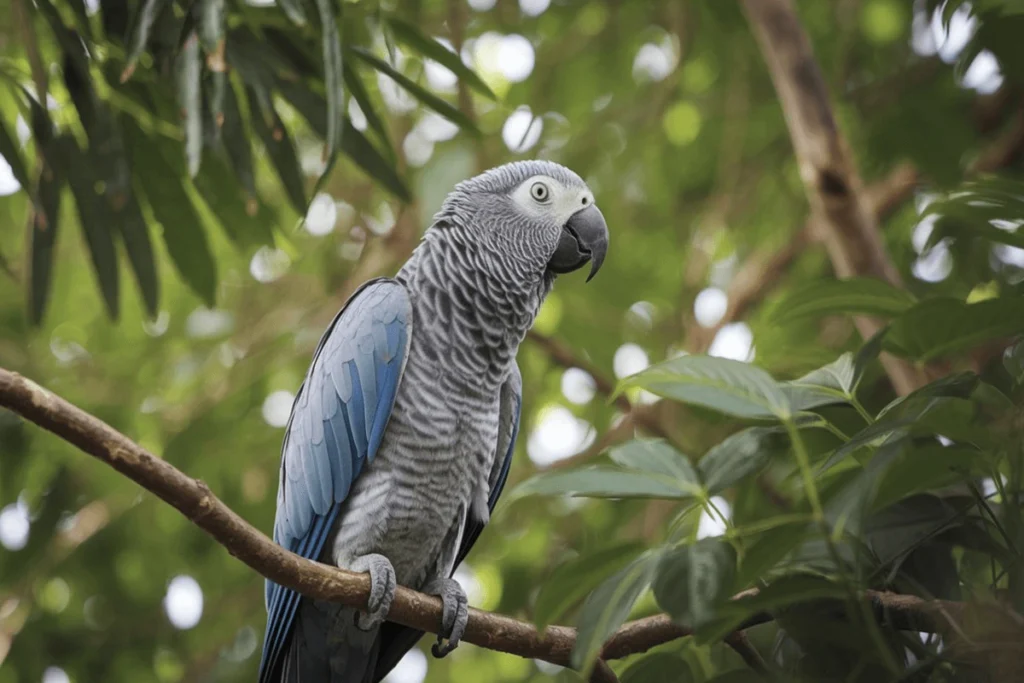
- Macaws (Up to 70 years)
Large and colorful, Macaws are social, playful birds with lifespans that can exceed 70 years. Species like the Blue-and-Gold Macaw and Scarlet Macaw are particularly long-lived. Their need for spacious environments, mental enrichment, and social interaction makes them a rewarding but demanding pet for committed owners.
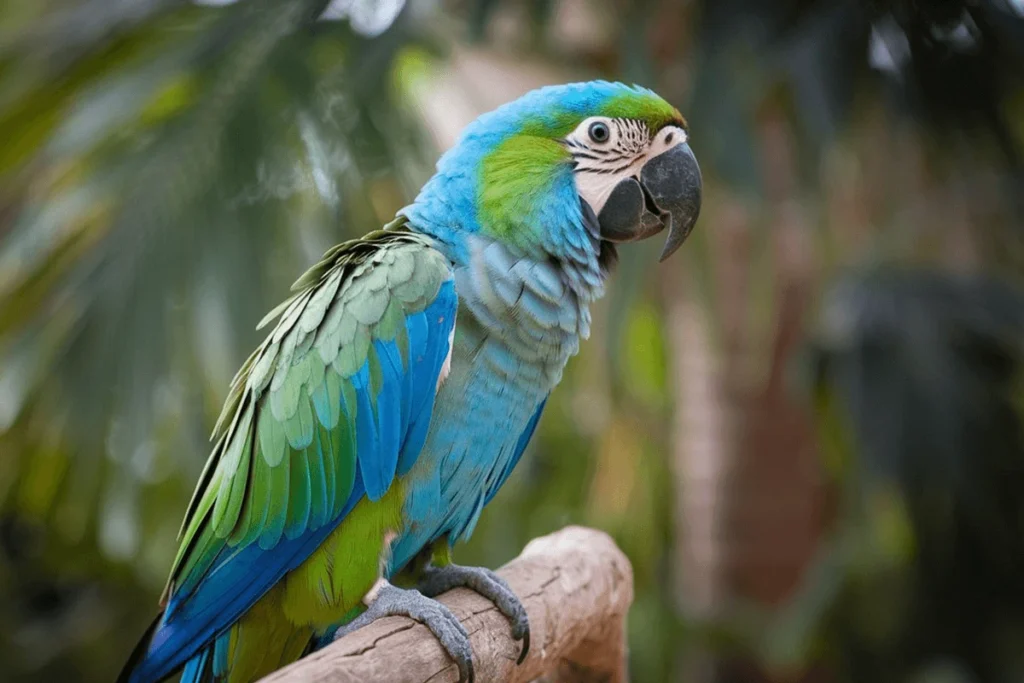
- Cockatoos (40–60 years)
Cockatoos are affectionate and highly social parrots that thrive on companionship. They require significant attention and care to meet their emotional and physical needs. With proper love and care, species like the Umbrella Cockatoo and Moluccan Cockatoo can live 40 to 60 years, making them cherished lifelong friends.
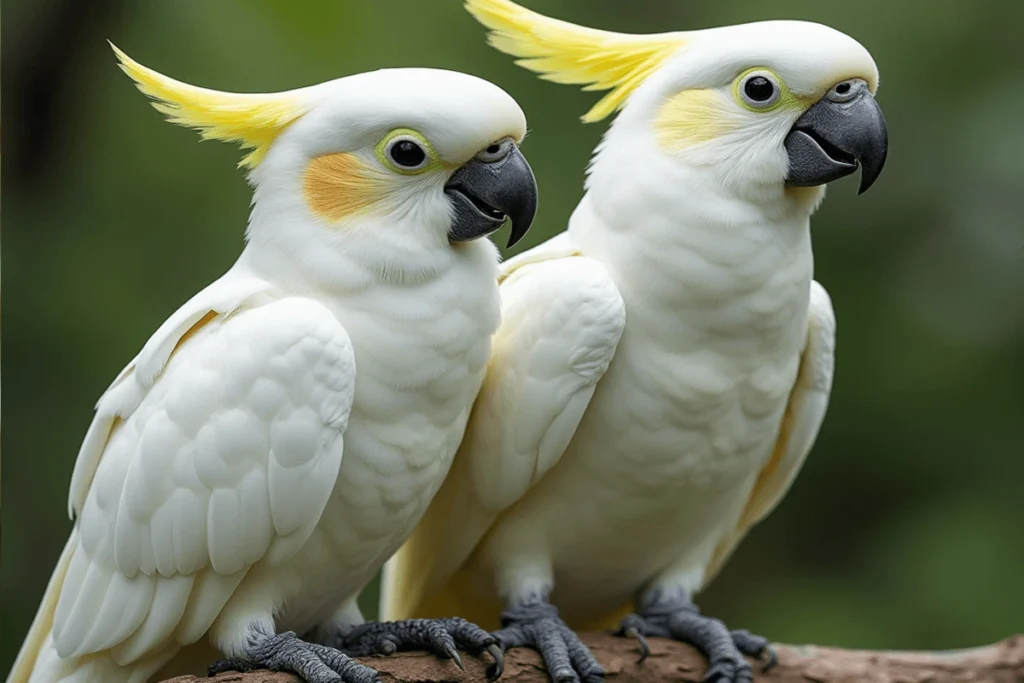
Shorter-Lived Parrots
While some parrots boast impressive lifespans, smaller species tend to have shorter life expectancies. These parrots still bring immense joy and personality to their owners’ lives, making them excellent companions for those who may not be prepared for the long commitment required by larger breeds.
- Budgerigars (5–10 years)
Also known as Budgies, these small, cheerful parrots are highly popular due to their affordability and manageable size. With a lifespan of 5 to 10 years, they still require proper care, including a balanced diet and regular interaction, to stay healthy and happy. - Lovebirds (10–15 years)
These colorful, affectionate parrots are often kept in pairs due to their strong social bonds. Lovebirds typically live 10 to 15 years when provided with a stimulating environment and a varied diet. They are lively and playful, making them delightful pets despite their shorter lifespan. - Parrotlets (10–15 years)
Tiny but full of personality, Parrotlets pack a lot of charm into their small size. They generally live for 10 to 15 years and thrive with daily interaction and mental stimulation. Despite their diminutive stature, they require as much attention as larger parrots.
Comparison Chart of Parrot Species and Lifespan
To help you quickly understand the lifespan differences among various parrot species, here’s a comparison chart:
| Parrot Species | Lifespan in Captivity | Lifespan in the Wild |
|---|---|---|
| African Grey Parrot | 50–60 years | 20–30 years |
| Blue-and-Gold Macaw | 60–70 years | 30–40 years |
| Umbrella Cockatoo | 40–60 years | 20–30 years |
| Budgerigar | 5–10 years | 3–5 years |
| Lovebird | 10–15 years | 5–8 years |
| Sun Conure | 20–30 years | 10–15 years |
This chart highlights how captivity can significantly extend a parrot’s lifespan, provided they receive proper care and attention. Larger parrots generally live longer than smaller ones, but all parrots benefit greatly from a balanced diet, mental enrichment, and a loving environment.
By understanding the lifespan of various parrot species, you can make an informed decision about which parrot is best suited to your lifestyle and how to provide them with the best care possible.
How to Extend the Parrot Lifespan
Proper Diet for Parrot Longevity
A balanced diet is one of the most crucial factors in ensuring your parrot lives a long, healthy life. Parrots are omnivores with diverse dietary needs, and feeding them the right foods can significantly impact their overall health and lifespan.
- Balanced Nutrition
- Fresh Fruits and Vegetables: Parrots thrive on a variety of fresh produce, including leafy greens, carrots, apples, berries, and mangoes. These provide essential vitamins, minerals, and antioxidants.
- Pellets: High-quality parrot pellets should make up a significant portion of their diet, as they are nutritionally balanced and help fill gaps that fresh foods may not cover.
- Seeds and Nuts: While seeds and nuts are favorites among parrots, they should be offered in moderation due to their high fat content. Use these as treats rather than staples.
- Foods to Avoid
- Avoid giving your parrot foods that are toxic or unhealthy, such as avocado, chocolate, caffeine, alcohol, and salty or sugary snacks. These can cause severe health issues and shorten their lifespan.
- Hydration
- Always provide fresh, clean water for your parrot. Dehydration can lead to health problems, so check their water supply regularly and clean their bowls daily.
- Dietary Enrichment
- Rotate food options and present meals in creative ways, such as hanging fruits in their cage or using foraging toys. This keeps mealtime engaging and stimulates their natural instincts.
Creating a Healthy Living Environment
The environment you provide for your parrot directly affects their physical and mental health. A safe, clean, and enriching habitat ensures they thrive and live a longer, happier life.
- Cage Size and Design
- Parrots need spacious cages that allow them to spread their wings, climb, and play. The larger the parrot, the bigger the cage required. Opt for cages with horizontal bars for climbing and ensure the spacing is safe for their size.
- Include perches of varying textures and diameters to keep their feet healthy.
- Environmental Enrichment
- Provide toys, swings, and climbing structures to keep your parrot mentally stimulated. Rotate these items regularly to prevent boredom.
- Offer out-of-cage time daily to let them explore and exercise.
- Cleanliness and Hygiene
- Clean the cage regularly to prevent the buildup of bacteria, mold, and droppings. Sanitize food and water bowls daily.
- Keep their environment free from harmful fumes, such as those from nonstick cookware or strong cleaning agents, which can be fatal to parrots.
- Temperature and Lighting
- Maintain a stable, comfortable temperature in your parrot’s environment, ideally between 65–85°F (18–29°C).
- Provide natural light or use full-spectrum lighting to support their circadian rhythm and overall well-being.
Routine Health Check-Ups
Regular veterinary care is essential for identifying and addressing potential health issues before they become serious. Building a relationship with an avian veterinarian ensures your parrot receives the specialized care they need.
- Annual Vet Visits
- Schedule yearly check-ups to monitor your parrot’s overall health. During these visits, the vet can perform physical exams, run blood tests, and check for signs of illness.
- Discuss dietary and environmental updates with your vet to ensure you’re meeting your parrot’s evolving needs.
- Preventative Care
- Vaccinations: Some parrots may require vaccinations depending on their environment and exposure risks.
- Parasite Control: Regular checks for mites, lice, or internal parasites are important, especially for parrots that spend time outdoors.
- Early Detection of Health Issues
- Watch for signs of illness, such as changes in appetite, droppings, feather condition, or behavior. Early detection can be life-saving.
- If you see anything strange or different with your pet, please talk to your veterinarian right away. Parrots often hide signs of illness until it becomes severe.
- Nail, Beak, and Feather Maintenance
- Regular grooming, such as nail trims and beak checks, is vital for your parrot’s comfort and health.
- Provide opportunities for natural feather care, like bathing or misting, to keep their plumage in top condition.
By focusing on diet, environment, and regular health care, you can give your parrot the best chance at a long, vibrant life.
Fun Facts About Long-Lived Parrots
The Oldest Parrots on Record
Parrots are known for their impressive lifespans, with some individuals living far beyond their species’ average. Stories of exceptionally old parrots highlight not only their potential for longevity but also the incredible bonds they form with their owners over time.
- Famous Old Parrots
- Charlie the Blue-and-Gold Macaw: Reported to have lived over 100 years, Charlie is one of the most well-known parrots in longevity discussions. While his exact age is debated, he serves as an icon of how long parrots can live with proper care.
- Cookie the Cockatoo: A Major Mitchell’s Cockatoo at Brookfield Zoo in Chicago, Cookie lived to be 83 years old. He held the Guinness World Record as the oldest living parrot until his passing in 2016.
- What Contributed to Their Longevity?
- Exceptional care, including a proper diet and medical attention, played a significant role in these parrots’ long lives. Additionally, enriching environments and close bonds with caretakers likely contributed to their well-being.
- Lessons from Longevity Stories
- These stories emphasize the importance of long-term commitment when caring for parrots. They also inspire owners to prioritize quality care to give their pets the best chance at a long and healthy life.
Cultural Significance of Long-Lived Parrots
The remarkable lifespan of parrots has made them symbols of wisdom, longevity, and companionship in various cultures throughout history.
- Parrots in Folklore and History
- In many indigenous cultures, parrots are seen as messengers between humans and the spiritual world. Their vibrant colors and long lives often represent vitality and eternal life.
- Historical figures, such as Winston Churchill, owned parrots that became part of their legacy. Churchill’s African Grey Parrot, Polly, reportedly lived decades and was known for mimicking his famous speeches.
- Parrots as Generational Companions
- Because of their long lifespans, parrots often become family heirlooms, passed down from one generation to the next. This unique aspect deepens their cultural significance as symbols of continuity and connection.
- Modern Appeal of Long Parrot Lifespan
- In contemporary times, long-lived parrots have become cherished members of households, valued not only for their beauty and intelligence but also for their ability to create lasting relationships with humans.
Parrot Longevity Myths Debunked
While parrots are known for their longevity, several myths about their lifespan persist. Separating fact from fiction helps owners provide realistic and effective care for their birds.
- Myth: All Parrots Live Over 50 Years
- Reality: While many large parrots, such as Macaws and African Greys, can live 50 years or more, smaller species like Budgerigars and Lovebirds typically have lifespans of 5–15 years. Lifespan varies greatly depending on the species and care provided.
- Myth: Parrots in the Wild Live Longer Than Those in Captivity
- Reality: Wild parrots often face threats like predators, disease, and habitat loss, which can significantly reduce their lifespan. Captive parrots, with proper care, often outlive their wild counterparts thanks to consistent food, shelter, and medical attention.
- Myth: Feeding Parrots Only Seeds Is Sufficient
- Reality: Seeds alone do not provide the balanced nutrition parrots need. A varied diet that includes fruits, vegetables, and pellets is essential for their health and longevity.
- Myth: Parrots Don’t Require Regular Vet Visits
- Reality: Parrots are masters at hiding illness, and many health issues go unnoticed until they become severe. Regular vet check-ups are crucial for early detection and prevention of problems.
- Myth: Older Parrots Don’t Need as Much Attention
- Reality: Aging parrots require just as much, if not more, attention and care to address age-related health concerns. They need mental stimulation, a healthy diet, and an enriched environment to thrive in their later years.
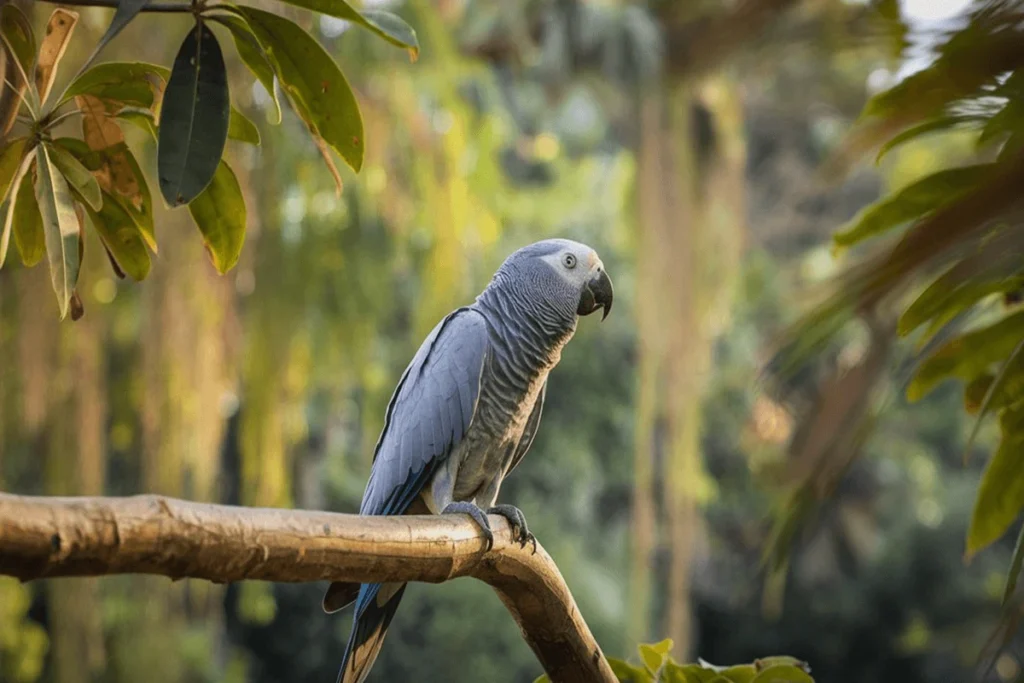
By debunking these myths, parrot owners can better understand their responsibilities and make informed choices that positively impact their birds’ health and happiness.
FAQs About Parrot Lifespan
What’s the Best Way to Keep a Parrot Healthy?
Keeping a parrot healthy requires a proactive approach that combines proper care, attention to their physical and mental needs, and an understanding of their specific species’ requirements. Here are the key aspects to focus on:
- Balanced Diet
- Provide a diet rich in variety, including fresh fruits, vegetables, high-quality pellets, and occasional seeds or nuts as treats.
- Ensure the diet is tailored to your parrot’s species, as nutritional needs can vary widely.
- Physical and Mental Stimulation
- Parrots are intelligent and active birds that need regular mental engagement to prevent boredom and behavioral issues.
- Offer toys, puzzles, and opportunities for interaction, such as training sessions or games. Out-of-cage time for exercise and exploration is equally essential.
- Hygiene and Cleanliness
- Regularly clean their cage, perches, and food bowls to prevent bacterial or fungal infections.
- Bathe or mist your parrot to keep their feathers healthy and support their natural grooming habits.
- Regular Veterinary Care
- Schedule annual check-ups with an avian veterinarian to monitor your parrot’s health.
- Be vigilant for early signs of illness, such as changes in appetite, droppings, or feather condition, and seek immediate care if needed.
- Social Interaction and Emotional Well-being
- Parrots are friendly animals that enjoy spending time with people. They are happy when they play and talk with their caregivers. Spend quality time with them daily to strengthen your bond and reduce stress.
- Avoid leaving them alone for extended periods, as loneliness can lead to anxiety and health problems.
Is Parrot Lifespan Longer Than Other Birds?
Yes, parrots generally have longer lifespans compared to most other bird species, thanks to their size, intelligence, and adaptability. Here’s how they compare:
- Comparison with Small Birds
- Birds like canaries and finches typically live 5–10 years, much shorter than even smaller parrot species like Budgerigars, which can live up to 10 years in captivity.
- The larger brain-to-body ratio of parrots may contribute to their longevity by supporting higher adaptability and resilience.
- Comparison with Larger Birds
- While parrots like Macaws and African Greys can live 40–70 years, birds like ostriches and eagles also enjoy long lifespans but are less commonly kept as pets. Eagles, for instance, may live up to 30 years in the wild.
- Parrots’ ability to bond with humans and adapt to captive life often gives them a longevity advantage over wild birds facing environmental pressures.
- Unique Longevity Traits of Parrots
- Parrots’ social nature, intelligence, and need for enriched environments may contribute to their extended lifespan when cared for properly. Their long lives make them unique among common pet birds.
How Can I Tell My Parrot’s Age?
Determining a parrot’s exact age can be challenging, especially for adult birds, but there are clues to help estimate it.
- Feather Condition and Coloration
- Juvenile vs. Adult Feathers: Younger parrots may have softer, duller feathers, while adults typically develop more vibrant and well-defined plumage.
- Color Changes: Some species, like Indian Ringneck Parrots, undergo distinct color changes as they mature, such as the development of a ring around their neck.
- Beak and Claws
- A younger parrot’s beak is often smoother and lighter in color, while older birds may have a more rugged or darker beak.
- Claws may also show signs of wear and thickening with age, indicating an older parrot.
- Behavioral Clues
- Young parrots are usually more playful and curious, while older birds may show calmer, more deliberate behavior.
- Older parrots might sleep more or become less energetic, depending on their health and environment.
- Records and Documentation
- If you obtained your parrot from a breeder, shelter, or previous owner, check for birth records or documentation that might indicate their age.
- Microchipping can also help track the age of some parrots if done early in their life.
- Veterinary Assessment
- An experienced avian veterinarian can provide an age estimate based on physical examination, including the condition of the bird’s skeletal system, feathers, and overall health.
While it’s not always possible to determine a parrot’s exact age, understanding their life stage can help you tailor their care to their needs and ensure they enjoy a healthy and fulfilling life.
Conclusion
Parrots are not just pets—they are lifelong companions with remarkable intelligence, charm, and the potential for extraordinary longevity. Understanding their lifespan, the factors that influence it, and how to care for them properly is essential for anyone considering adding a parrot to their family.
By providing a balanced diet, a stimulating and safe environment, and regular veterinary care, you can significantly enhance your parrot’s quality of life and longevity. Each parrot species has unique characteristics and lifespan expectations, so it’s crucial to research and understand their needs before making a commitment.
The stories of long-lived parrots like Cookie the Cockatoo and the cultural significance of these birds remind us of the special bond they share with humans. Whether you choose a small, energetic Budgerigar or a majestic, long-lived Macaw, the joy and companionship they offer can span years, even decades.
While myths about parrot longevity abound, the truth is that their health and happiness depend largely on the care they receive. Owning a parrot is a responsibility that demands dedication and love, but the rewards of their loyalty, personality, and companionship make the effort worthwhile.
As you embark on or continue your journey with parrots, remember that your commitment to their well-being can profoundly impact their lifespan and quality of life. Parrots bring color, laughter, and joy to our lives, and with the right care, they can be cherished companions for many years to come.
Find more Useful Stuff For you Bird On PetMD Official
Get Helpful Tips for your pet on Our Home Website
